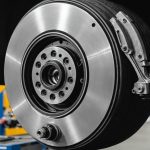The Yamaha XSR700 is a critically acclaimed motorcycle known for its blend of retro aesthetics and cutting-edge engineering. One of the essential maintenance tasks for this machine is replacing the spark plugs, which are crucial for the ignition system. This article will guide you through the detailed steps needed to replace the spark plugs on your Yamaha XSR700, ensuring peak performance and longevity for your bike. Whether you’re a seasoned motorcyclist or a relative newcomer, this comprehensive guide will walk you through each necessary step.
Preparation: Tools and Materials
Before diving into the replacement process, it’s crucial to gather all the necessary tools and materials. Proper preparation ensures a smooth and hassle-free experience.
Additional reading : What are the steps to adjust the handlebar position on a Honda CB500F for better ergonomics?
Tools You’ll Need
To replace the spark plugs on your Yamaha XSR700, you will need the following tools:
- Spark plug socket: Specifically designed to fit the size of the plug.
- Socket wrench: For easy removal and installation.
- Extension bar: Helps reach deep-seated plugs.
- Gap gauge: Ensures the spark plug gap is accurate.
- Torque wrench: For proper tightening.
- Dielectric grease: To prevent corrosion and ease future removal.
Materials
- NGK spark plugs: The NGK standard spark plugs are highly recommended for their reliability and performance.
- Manual Yamaha XSR700: The manual is indispensable for understanding specific requirements and torque settings.
Preparing these tools and materials in advance helps you avoid interruptions and ensures that the entire process is seamless.
In parallel : How do I install a top case on a Honda CB500X for increased storage?
Removing the Old Spark Plugs
Once you have all your tools and materials ready, it’s time to remove the old spark plugs. This step is crucial as it prepares the engine for the new plugs.
Step-by-Step Process
-
Locate the Spark Plugs: Refer to the manual Yamaha for the exact location of the spark plugs. They are usually found on the engine block.
-
Disconnect the Battery: To ensure safety, disconnect the battery to avoid accidental sparks.
-
Remove Ignition Coils: Gently remove the ignition coils that are covering the spark plugs.
-
Clean the Area: Use compressed air to clean any dirt or debris around the spark plug area to prevent contamination.
-
Remove the Spark Plugs: Using the spark plug socket and a wrench, carefully remove the old spark plugs. Turn counterclockwise to loosen and remove them.
Tips and Tricks
- Use a Universal Fit Socket: Ensure the socket fits perfectly to prevent damage.
- Handle with Care: Spark plugs are fragile; handle them with care to avoid breaking.
Following these steps ensures that the old plugs are removed correctly without causing any damage to the engine or ignition system.
Installing the New Spark Plugs
With the old spark plugs removed, you’re now ready to install the new ones. This step is crucial for the optimal performance of your Yamaha XSR700.
Step-by-Step Guide
- Check the Gap: Use the gap gauge to measure the gap of the new spark plugs. The correct gap can be found in the manual Yamaha XSR700.
- Apply Dielectric Grease: Dab a small amount of dielectric grease on the threads of the new plugs to prevent future corrosion.
- Install the New Spark Plugs: Carefully screw the new spark plugs into the engine block. Start by hand to avoid cross-threading.
- Torque the Spark Plugs: Use the torque wrench to tighten the spark plugs to the manufacturer’s specifications.
Common Mistakes to Avoid
- Over-Tightening: Over-tightening can damage the threads and the spark plug itself.
- Incorrect Gap: An incorrect gap can affect engine performance and fuel efficiency.
Ensuring the proper installation of new spark plugs is vital for maintaining the performance and longevity of your Yamaha XSR700.
Testing and Final Adjustments
After installing the new spark plugs, it’s crucial to test the bike and make any necessary final adjustments. This step ensures that everything is functioning correctly.
Testing the Ignition System
- Reconnect the Battery: Reconnect the battery to restore power to the bike.
- Start the Engine: Turn on the engine to check if the new spark plugs are firing correctly.
- Listen for Problems: Pay attention to any unusual sounds or vibrations that could indicate an issue.
Final Adjustments
- Check Engine Light: Ensure no warning lights are on the dashboard.
- Performance Test: Take the bike for a short ride to test its performance.
- Inspect the Plugs: After the test ride, inspect the plugs again to ensure they are still secure.
Verified Purchase Recommendations
For those looking to purchase NGK spark plugs, it’s recommended to choose verified dealers who offer free delivery. Adding the right NGK standard spark plugs to your cart can make a significant difference in performance.
Testing and making final adjustments ensures that your Yamaha XSR700 is running at its best, offering you a smooth and enjoyable ride.
Replacing the spark plugs on your Yamaha XSR700 is a critical maintenance task that ensures the bike’s optimal performance and longevity. Following these detailed steps—from preparation to testing—ensures a smooth and successful replacement process. With all the tools and materials ready, removing the old spark plugs, installing the new ones, and making final adjustments become manageable and straightforward tasks.
For those looking to purchase replacement parts, consider buying NGK spark plugs from verified dealers offering free delivery. This can save you both time and money. Remember, regular maintenance like this can prevent more significant issues down the line, keeping your Yamaha XSR700 in peak condition for years to come.
By following this guide, you can confidently replace the spark plugs on your Yamaha XSR700, ensuring that your motorcycle runs smoothly and efficiently.











